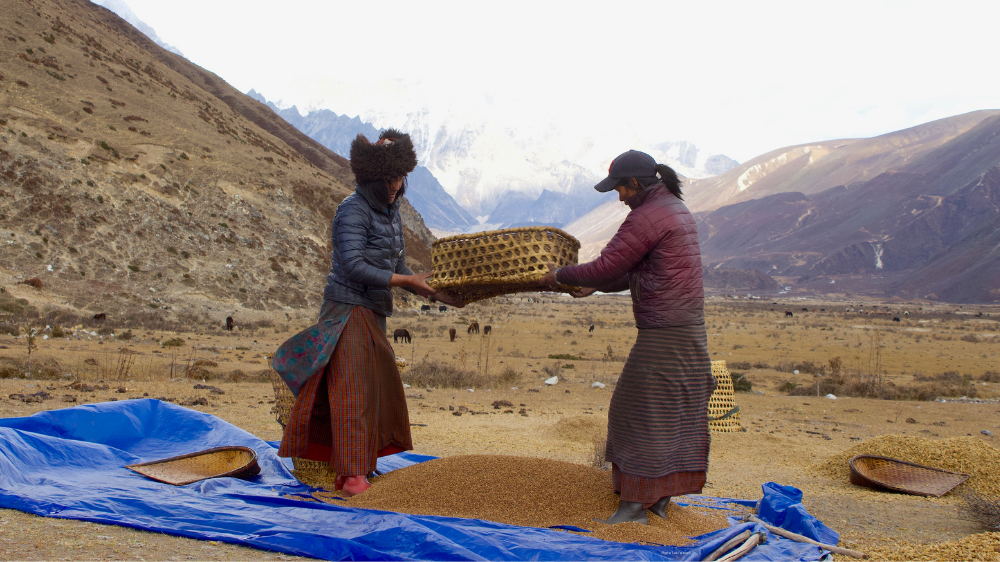Warmer climate and melting glaciers in the Himalaya are leading to flash floods that threaten high mountain communities: both Limi Valley in Nepal and Lunana-Punakha in Bhutan have been struck by a series of Glacial Lake Outburst Floods (GLOFs).
The floods are occurring at the same time as new transport and communications technology are arriving in these once-distant Buddhist communities, such as motorable roads, telephone connections and new governance modes.
How do the local Buddhists understand the landscape, and how do they react to global warming and natural disasters? Through photographs, text and objects we get an understanding of these changes and how they are understood and navigated by the people living in these high places. There are also several relevant books on display for everyone to borrow. We have made a list of these of these books.
The exhibition is a collaboration between the research project "Himalayan Connections: Melting Glaciers, Sacred Landscapes and Mobile Technologies in a Changing Climate" (HimalConnect) and the Humanities and Social Sciences Library at UiO.

About the project
HimalConnect is a four-year interdisciplinary research project (April 2018-March 2022) funded by The Research Council of Norway’s NORGLOBAL-2 programme, in cooperation with the Department of Culture Studies and Oriental Languages, UiO, Mongolia and Inner Asia Studies Unit, University of Cambridge, and UiT The Arctic University of Norway.
